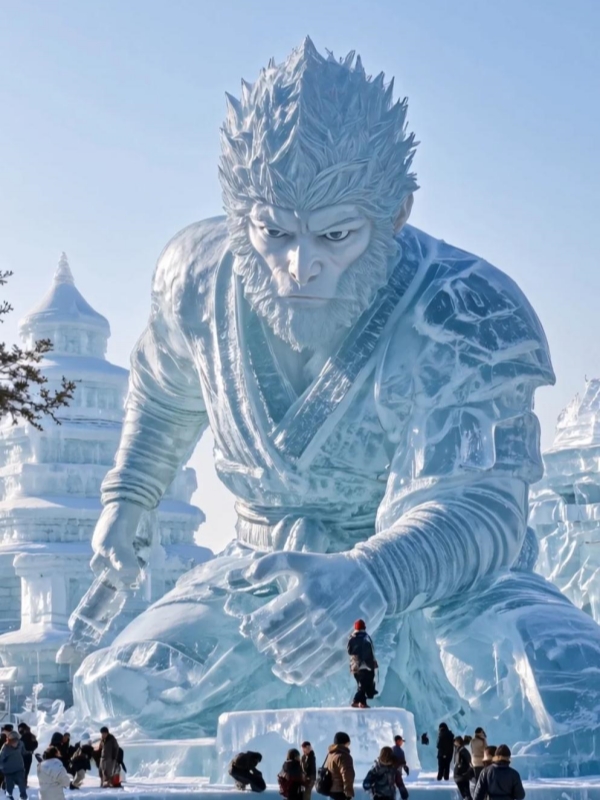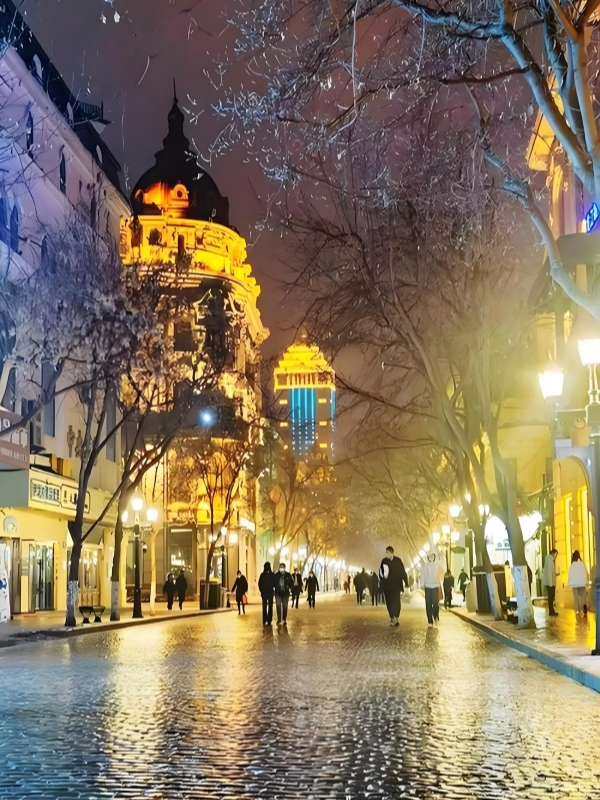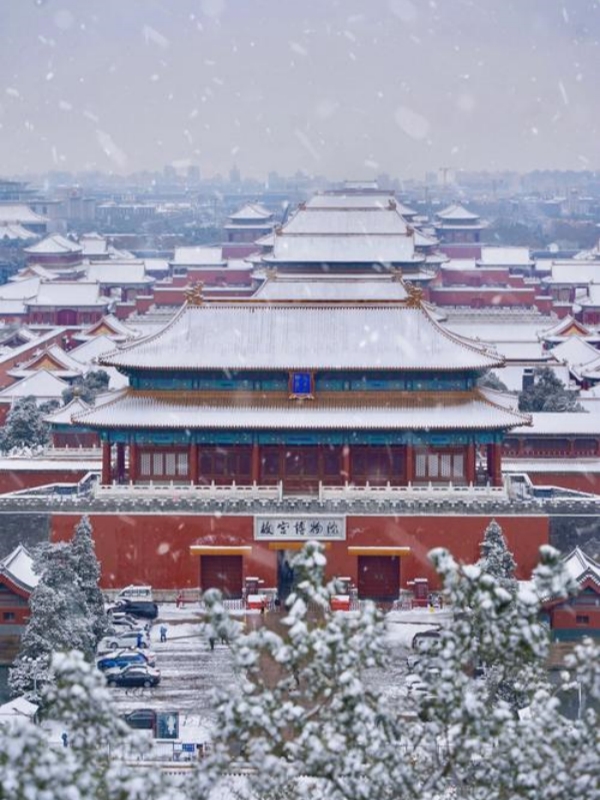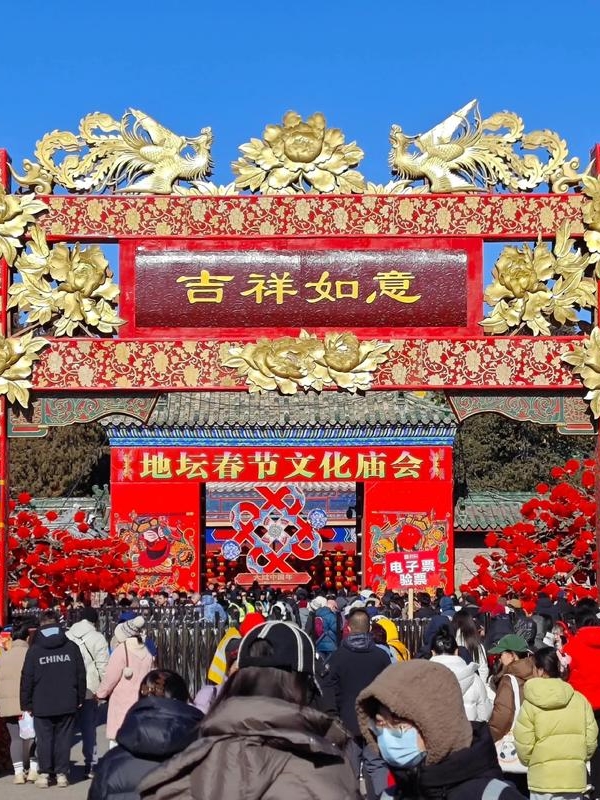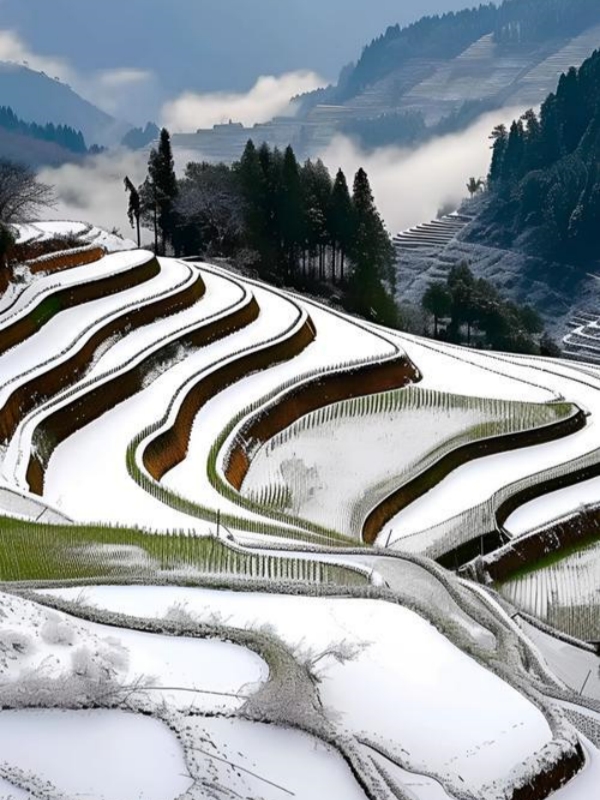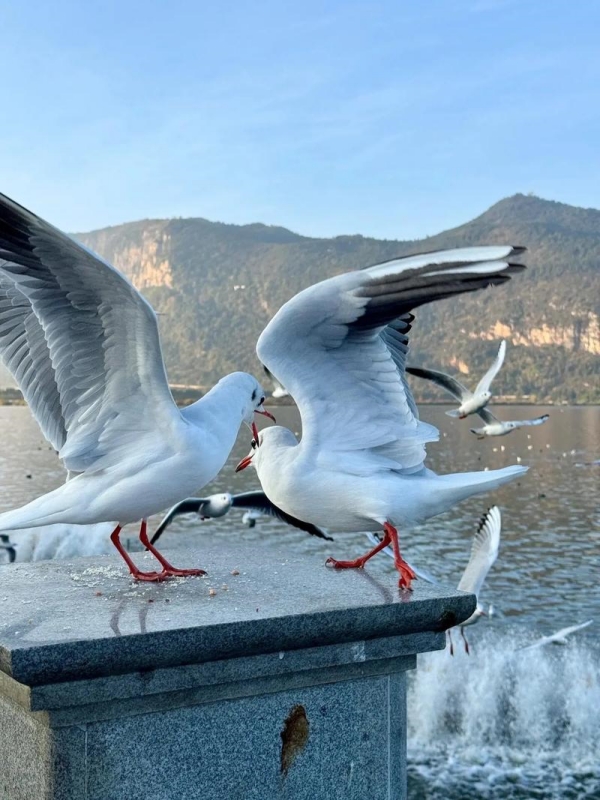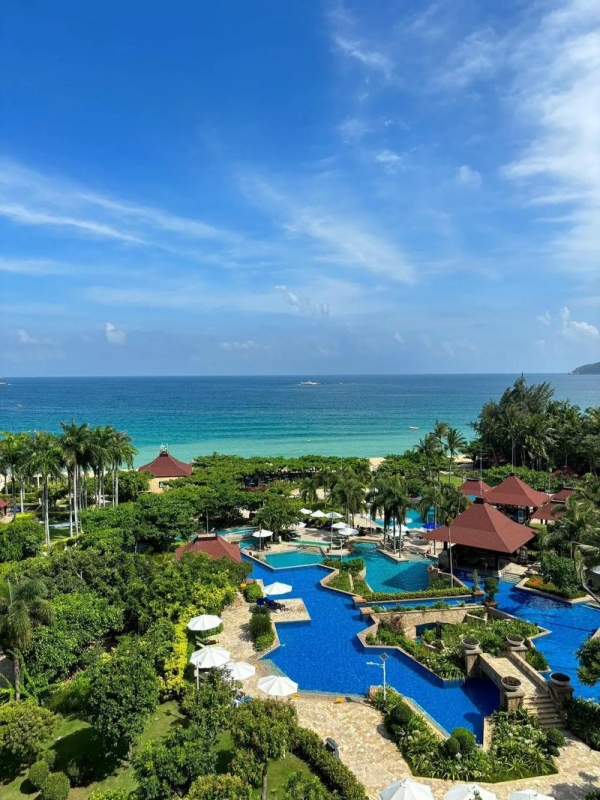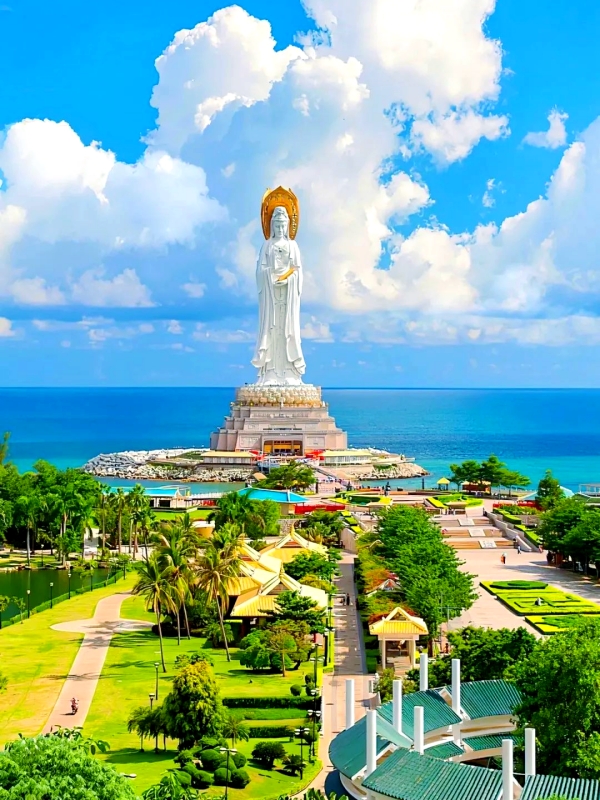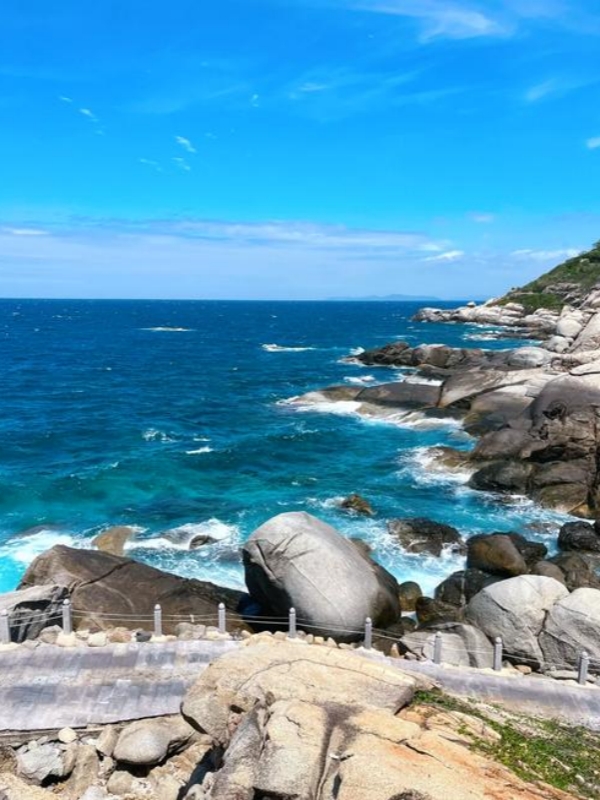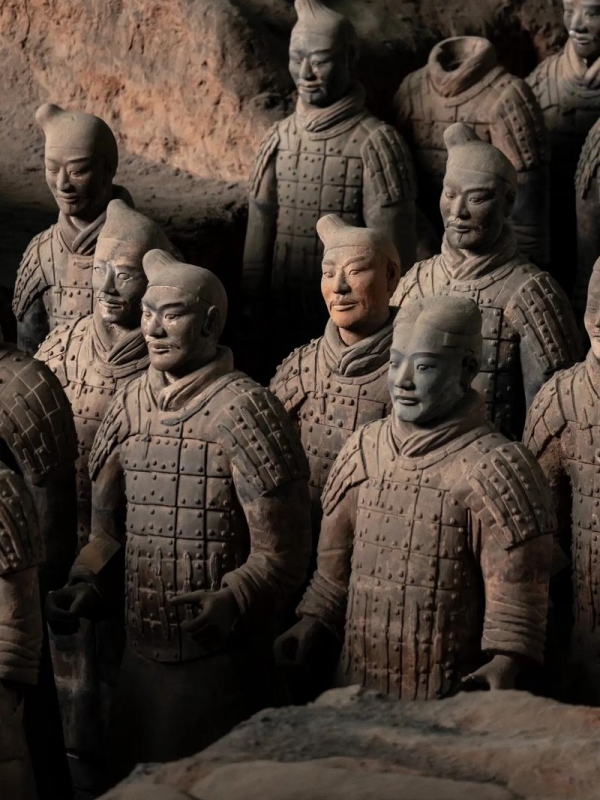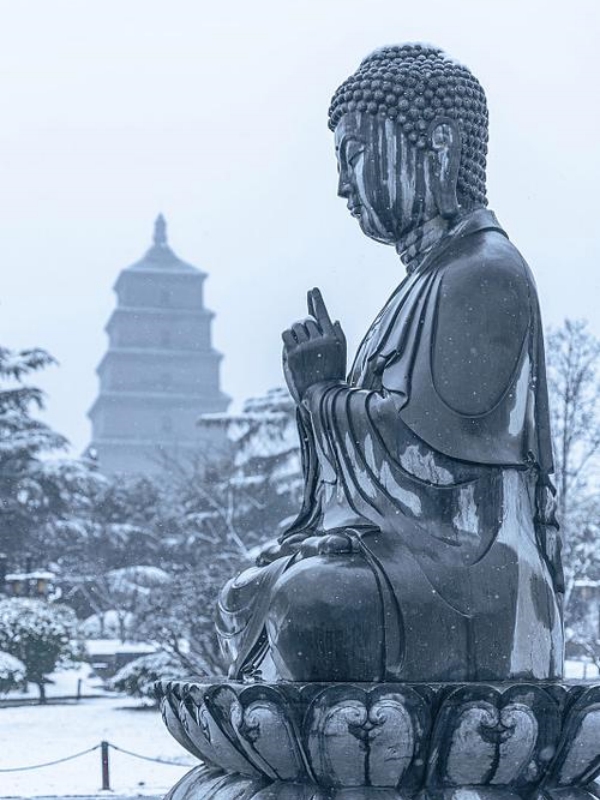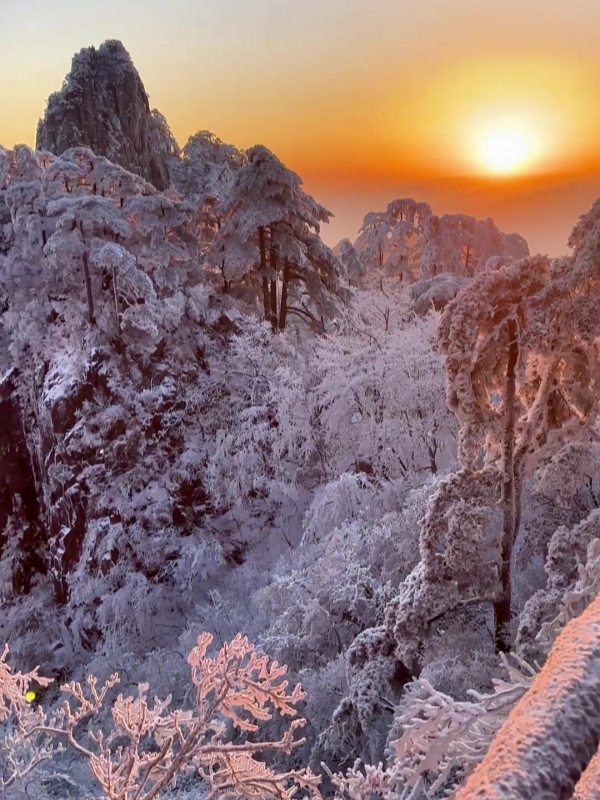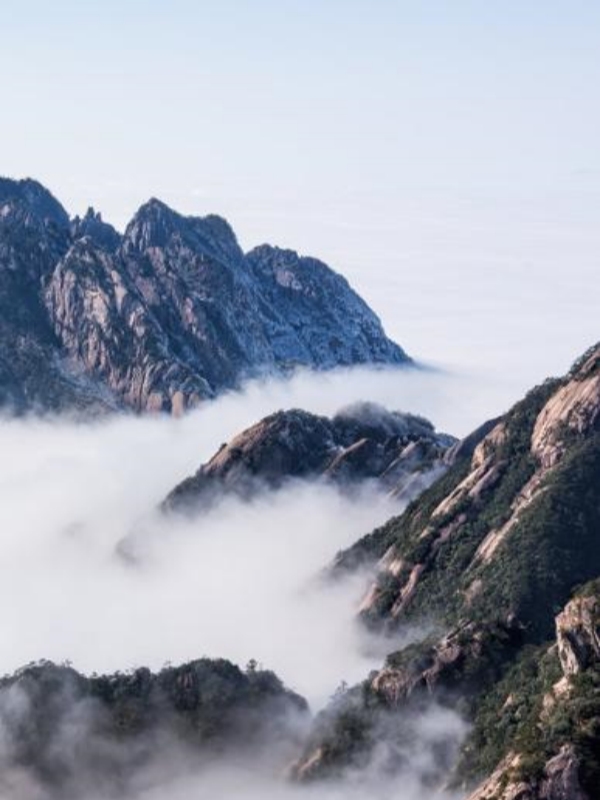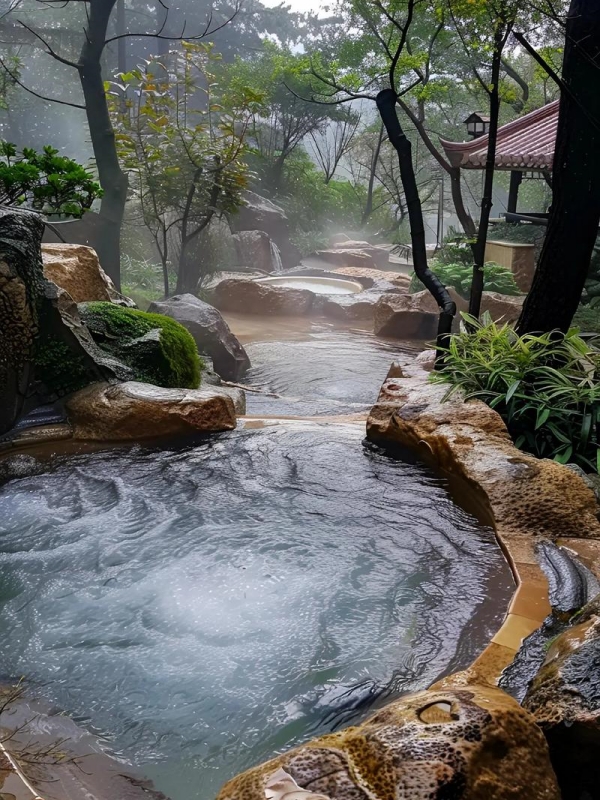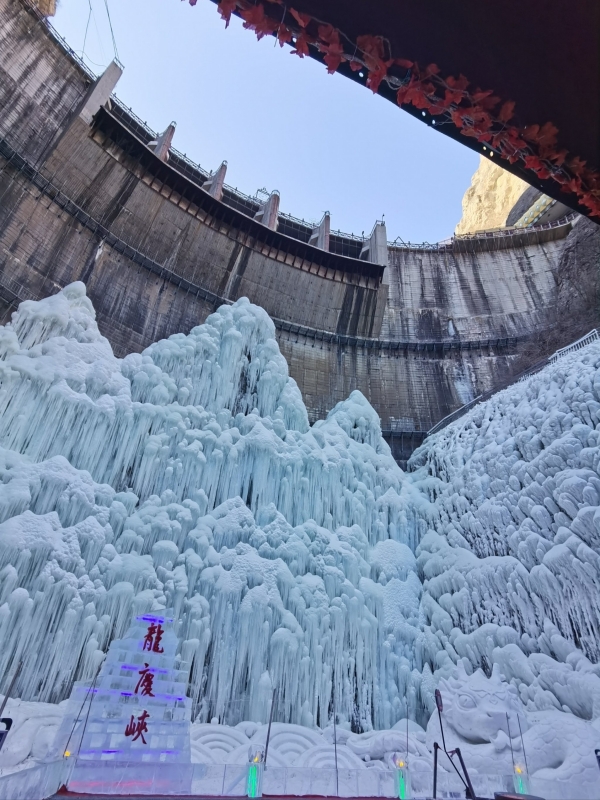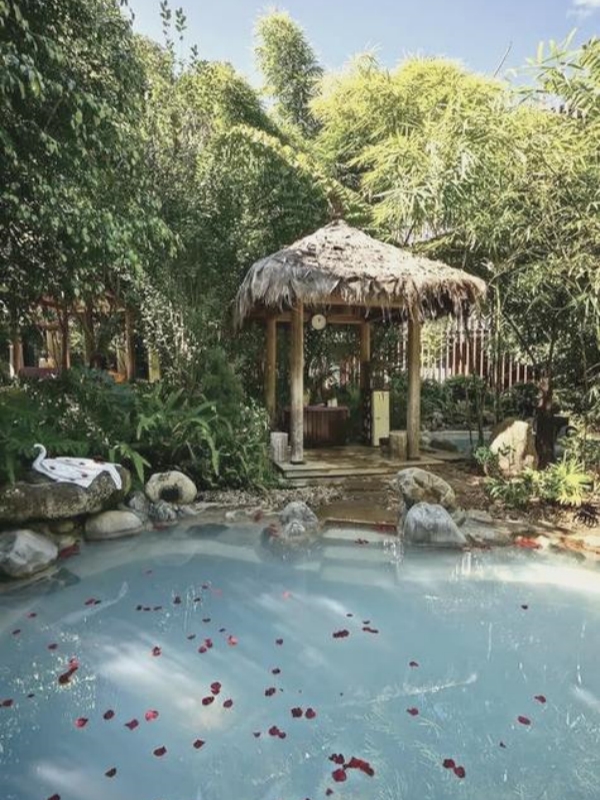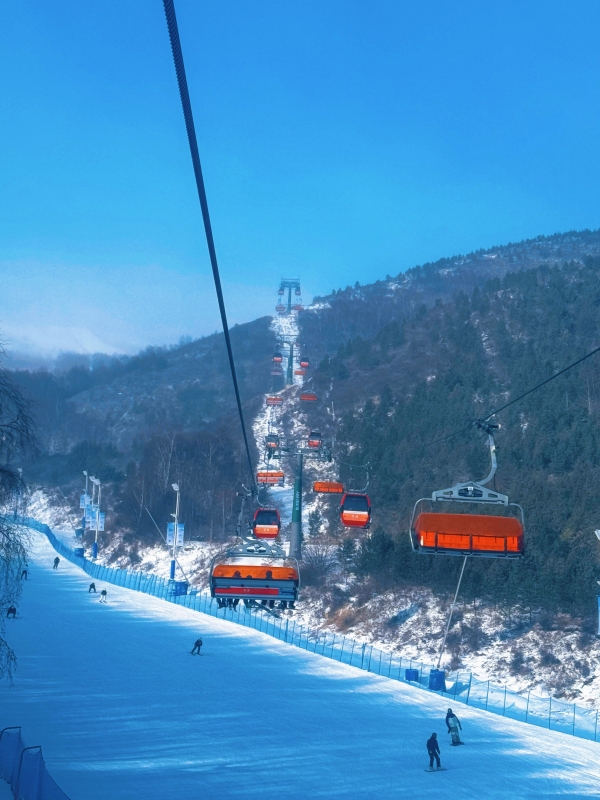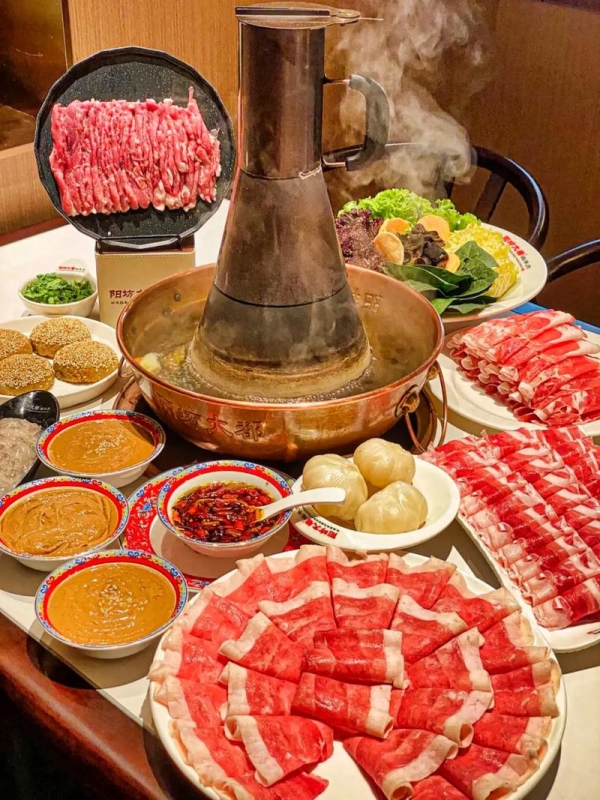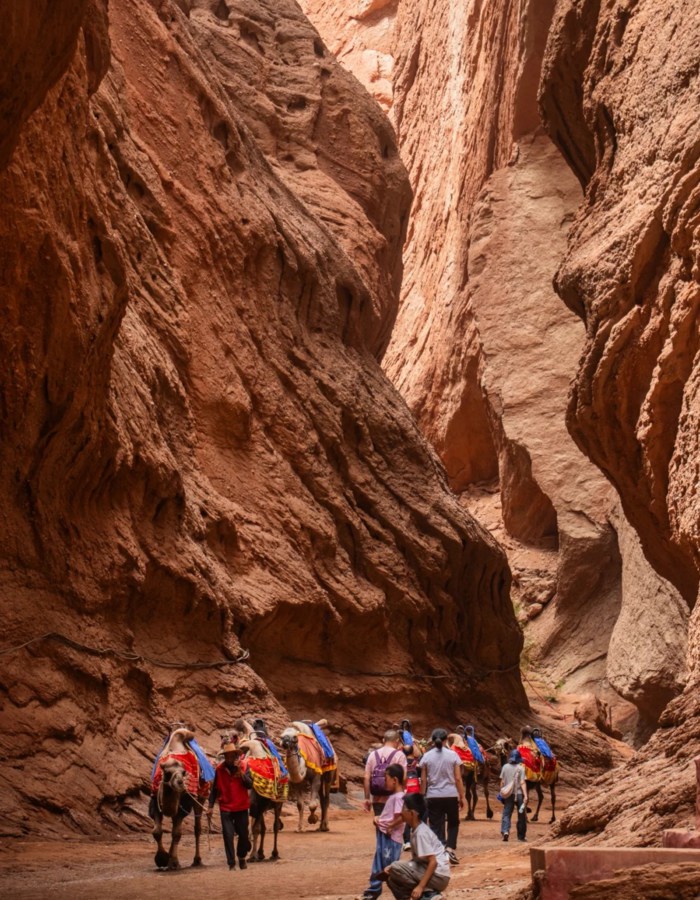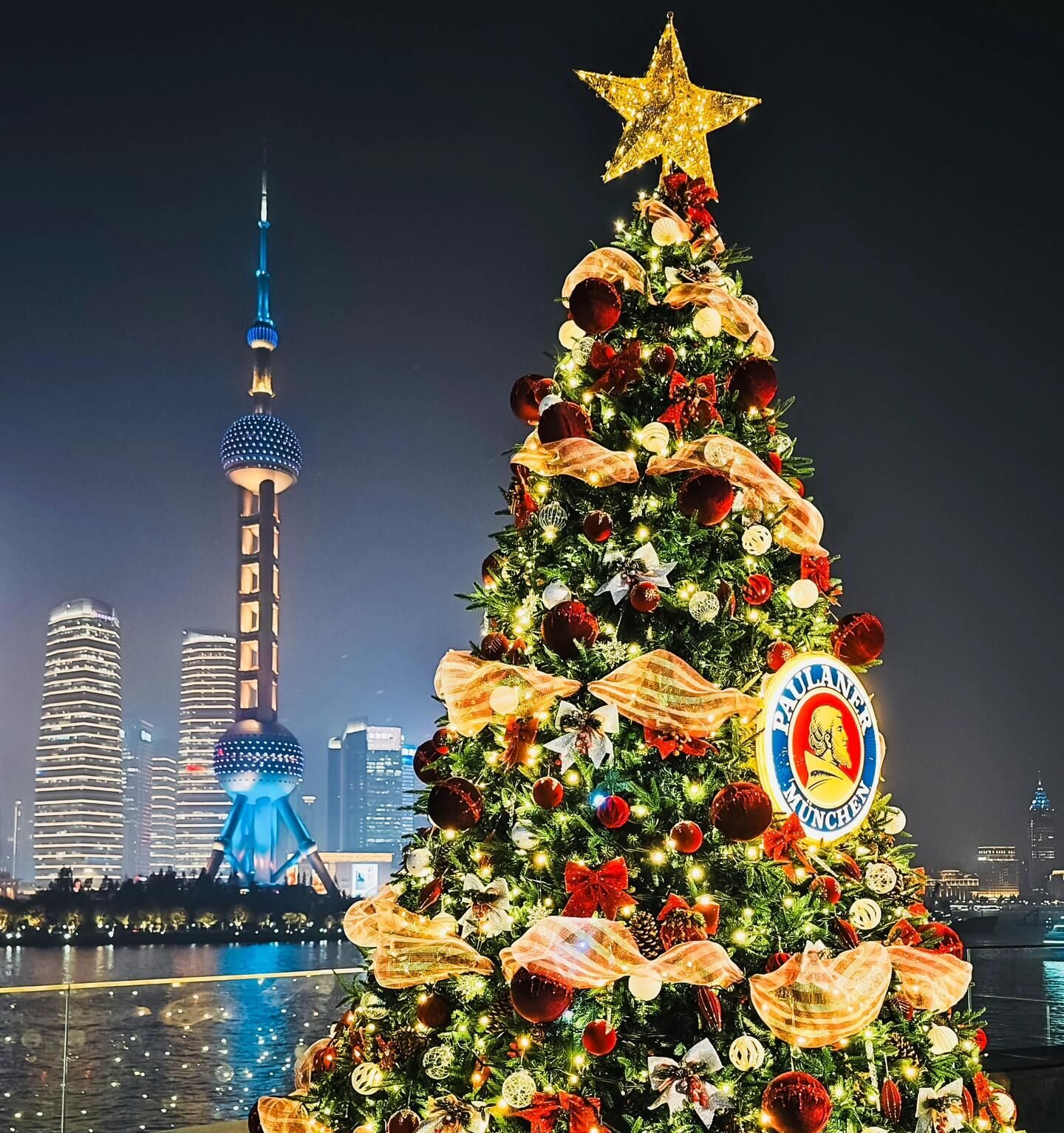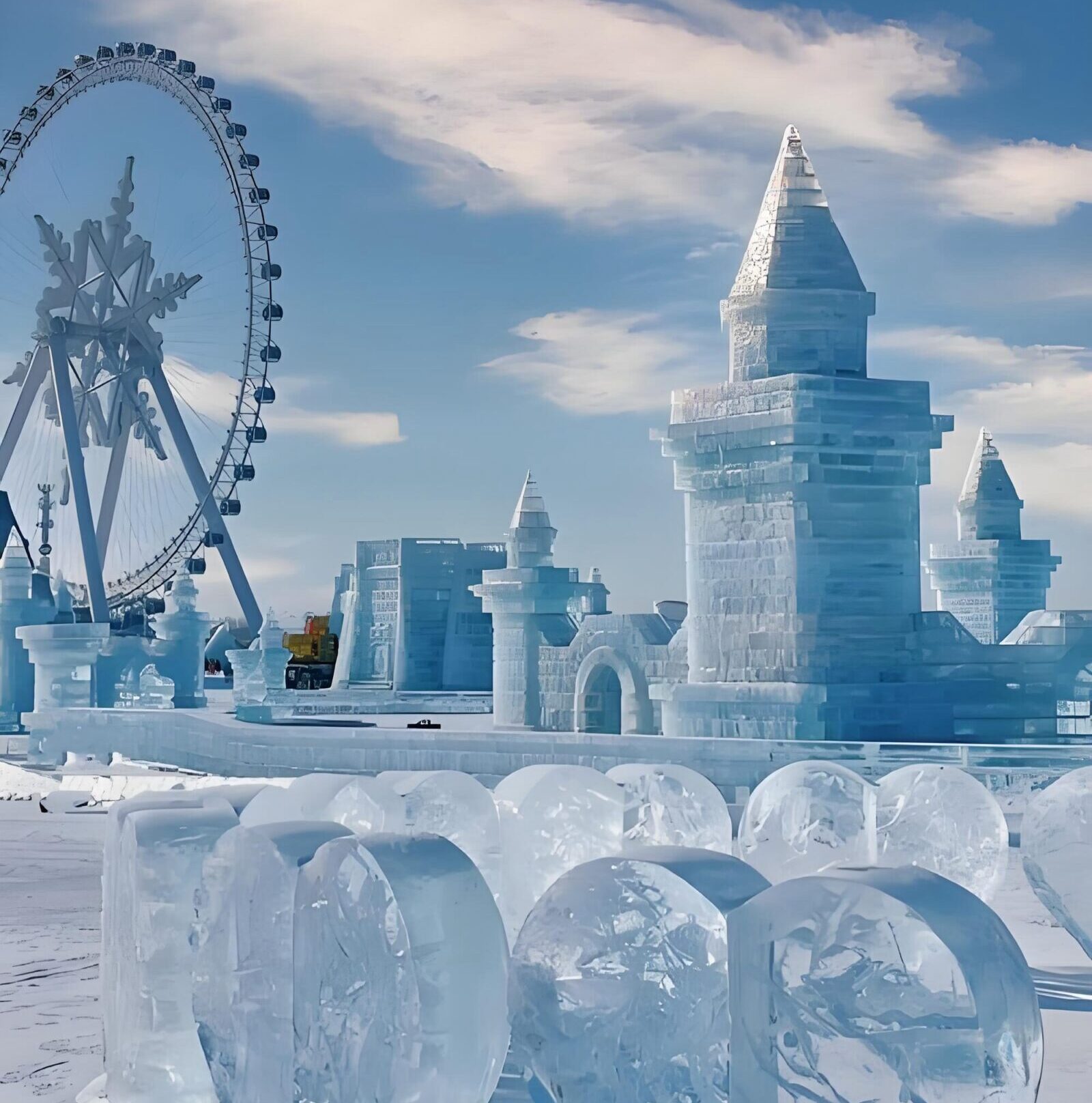
Ice and Snow World
Winter in China isn't a single season—it’s a full spectrum of climates, experiences, and travel styles happening at the same time. It is precisely this profound contrast, spanning from Harbin’s subzero nights to Yunnan’s mild afternoons, that forms the true appeal of winter activities in china. From regions delivering ice festivals, frozen lakes, and crisp mountain air, to others offering warm-weather escapes, bustling outdoor markets, and easier sightseeing with fewer crowds, China provides a unique array of seasonal choices.
So, how do you actually pick? You’ll want a clearer sense of how these winter activities in china feel on the ground—what the real costs are, and how to pack without stressing over every tiny detail. Forget the complicated research. Just picture yourself: are you exploring a glowing ice palace, hiking a wide-open mountain trail, or enjoying warm street food where steam curls into the cool night air? If you’re even thinking about a trip, stick around—China’s winter has a way of convincing you before you even realize you’ve started planning.
Quick Info:China Winter Destinations Summary
| City | Temperature | Highlights | Best For | Rating |
|---|---|---|---|---|
| Harbin | -18°C to -30°C | Giant ice festival, ice castles, Yabuli skiing | Adventure seekers, photographers | ⭐⭐⭐⭐⭐ |
| Beijing | -5°C to 5°C | Forbidden City snow, Houhai skating, Great Wall winter views | History lovers, families | ⭐⭐⭐⭐ |
| Yunnan | 5°C to 20°C | Rice terrace reflections, minority culture, mild weather | Culture travelers, photographers, cold‑averse visitors | ⭐⭐⭐⭐ |
| Sanya | 20°C to 27°C | Beaches, snorkeling, tropical sun | Families, couples, winter escape | ⭐⭐⭐ |
| Xi'an | 0°C to 8°C | Terracotta Warriors, ancient wall cycling, winter street food | First‑time visitors, history fans | ⭐⭐⭐ |
| Huangshan | -5°C to 5°C (summit) | Snowy pines, cloud sea, winter hot springs | Hikers, photographers | ⭐⭐ |
1. Harbin – Frozen Landscapes and Spectacular Ice Worlds
- Wukong Ice Sculpture
- Saint Sophia Cathedral
- Central Street
Temperature: -18°C to -30°C | Recommended stay: 2-3 days | Budget: ¥2,000-4,600 for 3 days
If you can only visit one place for authentic winter activities in China, make it Harbin. This northeastern city transforms into the world's largest ice festival every January, with sculptures so massive they dwarf buildings. I'm talking full-scale ice castles you can walk through, complete with slides, restaurants, and illuminated rooms.
What Makes It Special: The Harbin International Ice and Snow Festival isn't just a tourist attraction—it's an engineering marvel. Artists carve massive ice blocks extracted from the frozen Songhua River, then illuminate them with colored LEDs from inside. The result? Buildings that glow like frozen rainbows against the pitch-black winter sky.
What to Do:
- Ice and Snow World (冰雪大世界): The main event. Go at 4pm when it opens to beat crowds. Ticket: ¥330. Budget 3-4 hours minimum.
- Yabuli Ski Resort: China's largest ski resort with real snow. Day pass ¥350-500. It's no Swiss Alps, but the experience is authentic and the slopes are less crowded than Japanese resorts.
- Central Street (中央大街): Russian architecture meets Chinese winter. Free to walk, perfect for street food hunting.
The Reality Check: Let me be brutally honest about the cold: at -28°C your phone dies fast, your water freezes, and even your nose hairs turn solid. Still, the dry cold and powerful indoor heating mean you’ll swing between freezing outside and roasting indoors.
Who Should Go: ✓ Adventure seekers who want bragging rights
✓ Photographers (this is Instagram gold)
✓ Anyone who can handle extreme cold
✗ Skip if you have respiratory issues or hate being cold
2. Beijing – Imperial Landmarks Wrapped in Winter Calm
- Forbidden City
- Ice Skating on Houhai Lake
- Temple Fairs During Chinese New Year
Temperature: -5°C to 5°C | Recommended stay: 4-5 days | Budget: ¥1,750-3,250 for 3 days
Beijing in winter reveals a calmer, more atmospheric side of the city, where snow-dusted rooftops and quiet streets make familiar landmarks feel entirely new. The Forbidden City's red walls glowing against fresh snow become a dreamlike scene, and visiting the Great Wall feels peaceful in the cold, clear air.
Why Winter Works: Winter brings lighter crowds and crisp scenery, making it easier to enjoy Beijing’s historical sites at your own pace. With cooler temperatures, clearer views, and discounted entrance tickets, the season rewards travelers who enjoy slower, more comfortable city exploring.
Essential Winter Activities:
- Ice Skating on Houhai Lake: This is THE quintessential Beijing winter activity. For ¥40 entrance plus ¥60 skate rental, you glide across a frozen lake with 600-year-old hutongs and the Drum Tower as your backdrop.
- Great Wall in Snow: Mutianyu or Jinshanling sections become almost mystical after snowfall, and the reduced crowds mean you might have entire watchtowers to yourself.
- Temple Fairs During Chinese New Year: During Spring Festival, temple fairs bring dragon dances, traditional opera, and plenty of street food to explore.
Local Secrets: The No.9 Hot Spring Hotel (瀚金佰九号温泉) changed my opinion of Beijing winters. For ¥398, you get 18 hours access to outdoor hot pools, saunas, buffet, and lounge areas. After a freezing day at the Great Wall, soaking in hot water while snow falls around you is transcendent.
What to Eat: Beijing copper pot hot pot (北京铜锅涮肉) is non-negotiable. Unlike spicy Sichuan versions, this features clear broth with hand-cut lamb slices and sesame sauce. Try Jubaoyuan (聚宝源) in Niujie—expect queues, but worth every minute. Also hunt down street vendors selling roasted sweet potatoes (烤红薯, ¥5-10) and candied hawthorn (糖葫芦, ¥5-15).
If Beijing’s imperial landmarks felt magical in winter calm, you’ll love exploring more in Discover the Best Places to Go in Beijing for an Unforgettable Trip.
3. Yunnan Province – Gentle Sunshine and Easy Winter Wandering
- Yunnan Shines
- Gulls on Dianchi Lake
- Dali
Temperature: 5-20°C | Recommended stay: 7-8 days | Budget: ¥3,400-5,500 for 7 days
After surviving a week in Harbin's Arctic conditions, I flew to Yunnan and almost cried with relief. Suddenly I could feel my toes again! But Yunnan isn't just "warm China"—it offers some of the most photogenic winter landscapes in the country.
Why Yunnan Shines in Winter: This is peak season for Yuanyang Rice Terraces, when they're filled with water creating mirror-like reflections. The combination of mild weather (jacket sufficient, no parka needed), diverse ethnic minority cultures, and stunning landscapes makes Yunnan perfect for travelers who want winter activities in China without the extreme cold.
Key Destinations:
- Kunming (昆明) – "Spring City" with year-round temperatures of 8–18°C that justify its name. Winter brings thousands of black-headed gulls to Dianchi Lake, creating a lively seasonal scene.
- Dali & Lijiang (大理 & 丽江) These ancient towns highlight Bai and Naxi architecture. Cycle around Erhai Lake in Dali or wander Lijiang Old Town's cobblestone lanes.
- Yuanyang Rice Terraces (元阳梯田) From December to March, the terraces flood into thousands of mirrored pools that reflect sunrise colors. The shifting light across the terraces makes the long trip worthwhile.
Food Focus: Yunnan's wild mushroom hot pot is completely different from Sichuan or Beijing styles—earthy, complex, with 10-20 mushroom varieties you've never seen. Also try crossing-the-bridge noodles (过桥米线) in Kunming, a Yunnan specialty.
Who Should Choose Yunnan: ✓ Travelers who want mild winter weather
✓ Photographers (rice terraces, minority villages)
✓ Culture enthusiasts (25+ ethnic minorities)
✗ Skip if you specifically want snow/ice experiences
If Yunnan’s gentle sunshine made winter wandering feel effortless, you’ll love exploring Best Yunnan Attractions by City 2025 — Where Alpine Peaks, Lakeside Towns, and Minority Cultures Meet.
4. Sanya – Warm Beaches and Mid‑Winter Getaway Vibes
- Yalong Bay
- Sanya
- Wuzhizhou Island
Temperature: 20-27°C | Recommended stay: 3-5 days | Budget: Higher than mainland (resort pricing)
Let's be clear: Sanya isn't "cultural China." You won't find ancient temples or imperial history here. What you will find is China's Hawaii—turquoise water, white sand beaches, and weather that makes the rest of the country jealous.
The Honest Take: Sanya serves a specific purpose for winter activities in China: it's where Chinese families escape to when everywhere else is freezing. You'll see a different side of Chinese tourism culture—domestic travelers on holiday, beach resorts, water sports. After weeks in sub-zero temperatures, diving into 25°C ocean water is absolute bliss.
Best Beaches:
- Yalong Bay (亚龙湾): Clearest water, most upscale
- Dadonghai: Middle ground—nice beach, more affordable
- Wuzhizhou Island: Best for snorkeling and diving
Budget Reality: Sanya is expensive by Chinese standards. Budget ¥300-500/night for basic accommodation, ¥1,500-5,000+ for beachfront resorts. Meals cost more than mainland cities—¥100-200 per person for decent restaurants.
Who Should Visit: ✓ Families with kids (safe beaches, warm water)
✓ Couples wanting beach honeymoon
✓ Extended trips combining north + south
✗ Skip if you want authentic cultural experiences
If Sanya’s warm beaches already gave you mid-winter getaway vibes, you’ll want to dive into Sanya Location Guide 2025: Where to Stay, Visit, and Relax.
5. Xi'an – Ancient China at Its Quietest and Coolest
- Giant Wild Goose Pagoda
- Terracotta Army
- Buddha Statue in the Snow
Temperature: 0-8°C | Recommended stay: 2-3 days | Budget: ¥1,200-2,000 for 2 days
Xi'an deserves mention for one massive reason: the Terracotta Warriors look even more impressive when you're not competing with summer crowds. Winter brings 40% fewer tourists and hotel prices drop significantly. The Ancient City Wall bike ride in crisp air beats the summer sweltering heat by miles.
Worth It For:
- Terracotta Army (less crowded, better photos)
- Muslim Quarter food scene (lamb skewers, hand-pulled noodles)
- City Wall cycling (rent bikes, circle the entire 14km wall)
Quick Visit: Many travelers combine Xi'an with Beijing on a northern China winter loop. 2-3 days covers the highlights comfortably.
If Xi’an’s quiet and cool ancient charm drew you in, you’ll find even more in Xian City Travel Guide 2025: What to See, Eat & Know Before You Go.
6. Huangshan – Snow‑Draped Mountains and Dreamlike Vistas
- Rime on Huangshan Mountain
- Sea of Clouds on Huangshan Mountain
- Hot springs
Temperature: -5°C to 5°C at summit | Recommended stay: 2 days | Budget: ¥800-1,500
Huangshan (Yellow Mountain) in winter is photographer heaven. Snow-covered ancient pine trees, "sea of clouds" phenomenon, and 70% fewer tourists than peak season create almost mystical landscapes. The catch? Trails get icy—bring microspikes or rent them at the base.
Winter Advantages:
- 50% discount on entrance tickets
- Cheaper hotels
- Better chance of seeing the famous cloud formations
- Hot springs at the mountain base (perfect after hiking)
Challenge Level: Moderate to difficult in winter. Cable cars run unless weather is severe, but be prepared for cold, wind, and potentially slippery conditions.
Seasonal Highlights You’ll Want on Your Winter Itinerary
Ice Festival Adventures With Maximum Glow and Minimum Stress
Beyond Harbin, several cities host ice festivals. Longqing Gorge (80km from Beijing) offers a budget-friendly alternative at ¥100 entrance versus Harbin's ¥330. It's smaller, less crowded, and perfect for day-trippers based in Beijing. Jilin's Rime Ice Festival showcases natural ice formations on trees along the Songhua River—ethereal and free to view.
Pro Tips for Ice Festivals:
- Arrive at opening time (4pm for Harbin) to beat evening crowds
- Hand warmers are sold everywhere—buy 10+ packets
- Wear ski goggles if it's windy (ice particles sting)
- Most impressive after sunset when lights activate
Hot Springs That Turn Cold Days Into Pure Comfort
Chinese hot spring culture differs from Japanese onsen—swimsuits are mandatory, facilities tend to be larger and more social. Winter makes hot springs especially appealing when you can soak in outdoor pools while snow falls around you.
Top Picks:
- Huangshan Hot Springs: Soak after mountain hiking, surrounded by snow-capped peaks
- Tengchong, Yunnan: Volcanic hot springs with unique mineral content
- Beijing suburban resorts: Multiple options within 2-hour drive
What to Expect: Most Chinese hot spring resorts offer 5-15 different temperature pools, saunas, cold plunges, and rest areas. People typically stay 3-5 hours. Many include buffet meals in admission price (¥200-400 average).
Skiing Spots Offering Crisp Air and Playful Slopes
Chinese ski culture exploded after the 2022 Beijing Olympics. Resorts are improving, but equipment quality and instruction still lag behind Western standards. That said, skiing in China offers unique advantages: cheaper prices, fewer crowds on weekdays, and authentic local experience.
Best Resorts:
- Genting Resort Secret Garden (Hebei): 2022 Olympics venue, modern facilities, 2 hours from Beijing
- Yabuli (Heilongjiang): Largest resort, real snow, Olympic training center
- Wanlong (Hebei): Popular with expats, good for intermediates
Honest Assessment: Don't expect Aspen-level experience. Lift lines can be chaotic, English signage is limited, rental equipment is hit-or-miss. But day passes cost ¥350-800 versus $100+ in Western resorts, and you'll have authentic "skiing in China" stories.
Comfort Foods That Warm You From the Inside Out
Winter is objectively China's best food season. Hot pot restaurants pack every night, street vendors sell snacks that warm both hands and soul, and regional specialties showcase centuries of cold-weather cuisine.
| Category | Key Features | Price/Notes |
|---|---|---|
| Hot Pot Styles | From spicy Chongqing broth to Beijing’s clear lamb pot and Yunnan’s earthy mushroom blends — offering heat, comfort, and regional personality | 🌶️ Mild → Extreme |
| Winter Street Snacks | Sweet potatoes for warmth, chestnuts for aroma, and candied hawthorn for a sweet‑tart bite — classic cold‑season comfort | ¥5–40 |
| Seasonal Comfort Foods | Hearty soups, lamb dishes, and regional specialties that appear only during the coldest months — rich, warming, and deeply local | Varies by city |
Budget Tip: Local hot pot restaurants cost ¥60-100 per person versus ¥150-200 at chains like Haidilao. The authentic neighborhood spots often taste better anyway.
Your Essential Guide to Planning a Smooth Winter Trip
Choosing the Moment When Winter Travel Feels Just Right
December (Early Winter): ✓ Fewer tourists, lower prices
✗ Harbin Ice Festival not fully ready
Best for: Budget travelers, crowd avoiders
January (Peak Winter): ✓ Ice Festival prime time, best snow
✗ Extreme cold, Chinese New Year chaos (some years)
Best for: Ice festival priority, snow seekers
February (Late Winter): ✓ Slightly warmer, Lantern Festival
✗ Ice sculptures melting mid-month
Best for: Balanced experience
My Recommendation: Mid-January (Jan 10-25) offers optimal conditions—Ice Festival is perfect, snow quality peaks, and if you dodge Chinese New Year dates, crowds stay manageable.
Packing Smart for Everything From Frost to Sunshine
Here’s a quick packing overview to help you prepare for wildly different winter climates across China—from Harbin’s deep freeze to Yunnan’s mild spring-like days. Use this table to compare what you actually need for each region.
| Region | Temperature | What You Should Pack |
|---|---|---|
| Northeast China (Harbin, Mohe) | -20°C to -35°C | 800+ fill down jacket; thermal base layers; insulated waterproof boots; ski mask/balaclava; 20 hand/toe warmers; 2 power banks |
| Beijing / North China | -5°C to 5°C | Regular winter coat; sweaters; jeans; boots with good traction; hat, gloves, scarf |
| Yunnan (Kunming, Dali, Lijiang) | 5°C to 20°C | Light jacket; long-sleeve shirts; one warm layer; comfortable walking shoes |
| Universal Essentials | Varies | Lip balm; heavy moisturizer; tissues; VPN installed before arrival; WeChat Pay/Alipay set up |
Tips for Keeping Your Winter Trip Fun and Affordable
1.Visit during off-peak: Avoid Chinese New Year week—prices spike 30-50%
2.Book trains early: High-speed rail costs 40% less than flights
3.Eat where locals eat: Neighborhood restaurants are half the price of tourist areas
4.Skip tourist trap hot pot: Haidilao is famous but expensive (¥180/person vs ¥80 at local spots)
5.Buy attraction tickets online: Often 10-20% cheaper than gate prices
How to Stay Comfortable, Safe, and Ready for Anything
General Safety: China is very safe regarding violent crime. Winter-specific concerns are icy sidewalks (slip hazard), air pollution (worse in winter due to heating), and extreme cold health risks.
Health Tips: Tap water isn’t drinkable, so you’ll want to rely on bottled water throughout your trip. Winter pollution can spike in certain northern cities, making N95 masks useful—especially on days when aqicn.org shows rising PM levels. Pharmacies are easy to find and most basic medicines are available over the counter, but it’s still wise to carry your own travel insurance since medical care without coverage can get expensive fast.
Emergency Numbers: In case of trouble, China uses a simple set of nationwide numbers: dial 110 for police, 120 for an ambulance, and 119 for fire services. These lines operate 24/7 and connect quickly, even in remote areas, offering an essential safety net for winter travelers.
Frequently Asked Questions for Winter Travelers
Q: Is it worth visiting China in winter?
China in winter is worth it if you want quieter travel and dramatic landscapes shaped by winter activities in China. Crowds are far smaller, hotel prices drop, and cities like Harbin and Beijing feel transformed under snow. The cold is real and some places close during Chinese New Year, but the mix of ice festivals, hot pot culture, and festive winter streets makes the season memorable.
Q: How cold does China actually get?
Cold levels vary widely across regions, creating very different winter activities in China depending on where you go. Harbin often hits –25°C or colder, Beijing stays around –5°C to 5°C, and Shanghai’s humidity makes mild temps feel sharper. Yunnan remains mild at 5–20°C, while Sanya stays tropical. Central heating in the north helps a lot, while southern cities rely more on space heaters.
Q: What should I pack for winter in China?
Each region demands different packing for winter activities in China. Harbin needs a strong down jacket, thermal layers, insulated boots, and many warmers. Beijing only requires standard winter clothing with gloves and traction shoes. Yunnan travelers can pack lighter layers. No matter the destination, bring lip balm, moisturizer, tissues, and enough power banks to survive cold‑drained batteries.
Q: Can I find warm destinations in China during winter?
Yes—some of the most relaxing winter activities in China actually happen in warm regions. Yunnan cities like Kunming, Dali, and Lijiang stay mild and bright, perfect for outdoor walks. Sanya in Hainan offers tropical beaches at 20–27°C. Guangzhou and Xiamen remain comfortable too, making them great options for sunshine seekers.
Q: What do Chinese people celebrate in winter?
Winter activities in China include major cultural festivals, most importantly Chinese New Year. Families gather, temple fairs fill parks, and red lanterns light the streets. Winter Solstice brings special meals, and Laba Festival signals preparations for the New Year. Travelers visiting during this season get a close look at traditions shaped by family and food.
Q: When does Harbin Ice Festival open?
Harbin’s Ice Festival—one of the signature winter activities in China—soft‑opens in late December as sculptures take shape. The official launch is usually around January 5, with the best visiting window from January 10 to February 15. Melting becomes noticeable in late February. Exact dates shift yearly, so it’s worth checking updated announcements.
Q: Is Harbin Ice Festival worth the money?
For many travelers, Harbin Ice Festival is the most iconic of all winter activities in China. The glowing sculptures and icy architecture are stunning, though costs are higher and the cold is intense. Crowds can grow on weekends, so timing matters. Visiting on a weekday and entering at opening time makes the trip smoother.
Q: Are there alternatives to Harbin Ice Festival?
Several destinations offer different styles of winter activities in China. Longqing Gorge near Beijing provides a smaller ice festival with colorful lights. Jilin’s rime‑covered trees create surreal winter scenery. Harbin’s Zhaolin Park features free ice lanterns. Warm‑weather travelers can skip ice entirely and head to Yunnan or Sanya.
Q: Can kids handle winter activities in China?
Kids can enjoy winter activities in China with the right preparation. Harbin is better for older children due to extreme temperatures, while Beijing offers easier outings like ice skating and the Great Wall. Yunnan and Sanya suit all ages thanks to mild weather. Extra layers and warmers help keep days comfortable.
Q: What’s the best month for winter activities in China?
Mid‑January is often ideal for winter activities in China, with fully built ice sculptures, consistent snow, and manageable crowds before Chinese New Year. December works for budget travelers but can feel early, while February warms slightly and brings melting. Planning around festival dates improves the experience.
Q: How much does food cost in winter China?
Food remains affordable during winter activities in China. Street snacks like roasted sweet potatoes and candied hawthorn cost just a few yuan. Local restaurant meals usually fall between ¥50–100, while chain hot pot restaurants sit higher. Even with seasonal demand, dining stays budget‑friendly for most travelers.
Q: Can vegetarians find food in winter China?
Vegetarians can still enjoy winter activities in China with a bit of caution. Some dishes hide meat broths, so learning “我吃素” helps. Buddhist vegetarian restaurants offer reliable plant‑based meals, and hot pot makes customizing ingredients easy. Major cities now have growing vegetarian dining options.
Q: What about air pollution in winter?
Some northern cities experience higher pollution during winter activities in China because heating increases emissions. Checking aqicn.org daily helps with planning. N95 masks are useful on hazy days, and indoor attractions offer alternatives. Southern regions like Yunnan generally maintain cleaner winter air.
Q: Should I book tours or travel independently?
Both methods suit winter activities in China depending on comfort and experience level. Independent travel is flexible and cheaper but can involve language challenges. Tours simplify logistics and provide English guidance but have fixed schedules. Many travelers mix both, using tours only when they simplify complex routes.
